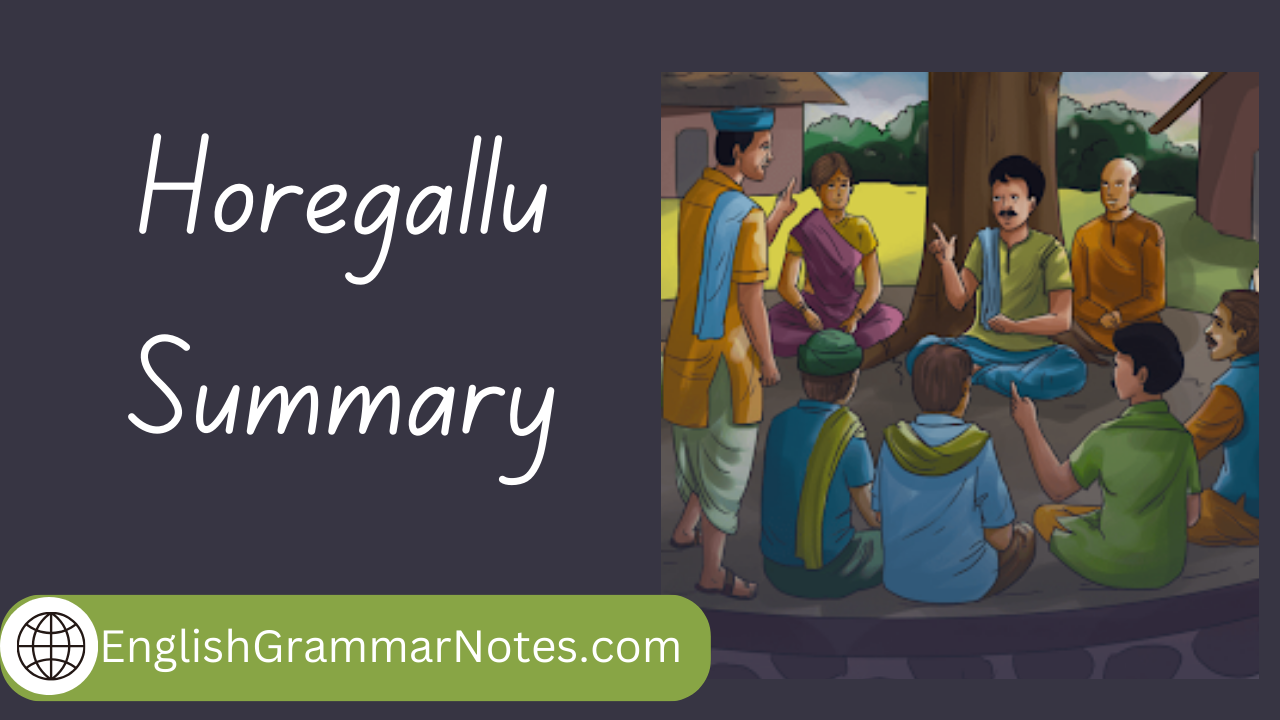Horegallu, a term that translates to “stepwells” in English, is a fascinating and culturally significant architectural phenomenon that has graced the landscape of the Indian subcontinent for centuries. These stepwells are more than just functional structures; they are living testaments to the ingenuity, engineering prowess, and artistic vision of the past. Horegallu Summary Notes this exploration of Horegallu, we will journey into the depths of these subterranean marvels, examining their historical importance, architectural intricacies, and the cultural contexts that gave rise to them. Read More Class 12 English Summaries.
Horegallu About The Author :

– Sudha Murty
Sudha Murty was born in 1950. She is an M.Tech in Computer Science and teaches Computer Science. She writes a lot both in English and Kannada. ‘Horegallu’ is taken from The Old Man and His God: Discovering the Spirit of India.
Horegallu Summary
Page 26: Hot summer days remind me of my childhood in a small village. There was a large banyan tree right in the middle of the village. During holidays I spent many hours playing under it. The tree was like a big umbrella. It gave much needed shade and comfort. Travellers spent some time sitting under it, taking some rest, before they continued their journey. To make them comfortable there was a ‘horegallu’ under the tree. ‘Horegallu’ means ‘a stone that can bear weight’.
It was a large flat stone placed horizontally overtwo vertical stones. It was a stone bench. People could sit on it, chat with a fellow traveller and exchange news of the road. Cool water was kept in earthen pots and travellers could drink the water. I am sure such simple arrangements are found all over the country.
The horegallu in our village brings special memories for me because it is connected with my grandfather. He was a retired school teacher. He would spend hours sitting under the banyan tree, talking to those resting there. When I got tired of playing I would sit next to him listening to their conversations and observing the people.

Page 27: Most of the villagers were taking a break from their work in the nearby fields. They had to walk long distances each day. They had to carry heavy burdens on their heads. Tired by the heat, they would drink the cold water, wash their faces and chat with my grandfather. They often talked about their lives and worries.
One man would say, “Masterji, this summer has been so hot. I have never seen such a dry weather.” Another would say, “Masterji, it is getting difficult for me to carry heavy loads on my head. Thank God for this horegallu. I want my son to help me but he simply wants to go to the city.” My grandfather listened to their talk and they felt refreshed. They would soon go away with their burdens. The horegallu was an important feature in their lives and I wondered why they blessed it so often.
It was just a stone bench. Then my grandfather told me that a horegallu is essential in any journey. We all carry burdens in our different ways. Once in a while we need to stop, put down that burden and rest. Only then we will be refreshed to carry the load again. The horegallu helps the people to regain their strength.
Later in life I happened to see something that reminded me of that horegallu. I was working in Mumbai. One of my colleagues was Ratna. She was a senior clerk, middle-aged and always smiling. She had been working in the company for nearly 25 years, after her graduation. She continued working with a cheerful face.
Every day during lunch hour, she would sit with some person in one of the rooms, chatting with him/her. I often wondered what they talked about. One day I asked what they discussed during the lunch hour. Ratna told me that they shared their troubles with her.
Page 28: I asked her how she could help in solving their problems. Did she have an answer for them? She told me she only listened to them. I was young and I wondered how merely by listening to somebody’s problem, it gets solved. She then told me that she was not a trained counsellor or an intellectual. Nobody can solve your problem. You have to solve it yourself. I then wondered what the point was of listening to somebody’s problem if no help can be given.
Ratna answered me patiently. She told me that God had given her two ears to listen to others. She hears people with sympathy and no judgment. When somebody talks about his worries, it relieves him a lot. I then wanted to know if she ever told other the secrets she heard. Ratna told me that not even in her dreams she would do that. Revealing somebody’s secret is the worst kind of betrayal. People told her of their worries because they were certain that she would never tell others about them. They relieve themselves by talking about their burdens and they continue with their life’s journey.
Ratna’s words reminded me of my grandfather sitting on the bench stone listening to people. Neither my grandfather nor Ratna were rich. But in their small ways they were doing great social service. No one thought of acknowledging their work or giving them any rewards. But they continue doing their service and it gives them joy. Whenever I pass by a horegallu anywhere, I think of my grandfather and Ratna. I wish there were more such ‘bench stones’ in this world.
Horegallu Conclusion :
In conclusion, our exploration of Horegallu, the enchanting stepwells of the Indian subcontinent, reveals not only a remarkable engineering and architectural legacy but also a profound cultural heritage. Summary Of The Chapter Horegallu these stepwells, born out of necessity in arid regions, have evolved into symbols of ingenuity, aesthetics, and community resilience.
